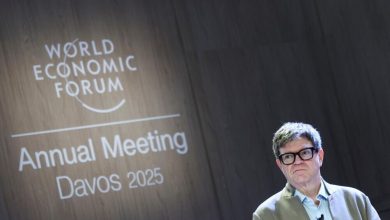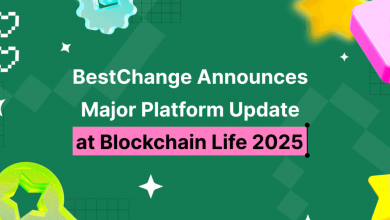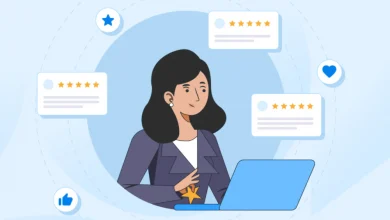Failures That Led to Success: Unexpected Opportunities in Business

Business failures often contain the seeds of future success, as demonstrated by the remarkable turnaround stories collected in this article. Industry experts share how setbacks ranging from failed campaigns to business closures ultimately revealed unexpected opportunities and strategic breakthroughs. These real-world examples show that resilience and adaptability aren’t just admirable qualities—they’re essential components of long-term business success.
- Technology Without Empathy Transforms Educational Approach
- Course Underperformance Reveals Better Business Model
- SEO Setback Leads to Strategic Breakthrough
- Failed Campaign Reveals True Customer Connection
- Local Presence Drives Sales Success
- Business Unit Closure Creates Dual Opportunities
- Automation Misstep Creates Competitive Advantage
- Website Analytics Launch Profitable New Service
- Leadership Burnout Transforms Management Philosophy
- Wrong Client Search Clarifies Business Focus
- Repeated Job Losses Spark Entrepreneurial Journey
- Setbacks Deliver Lessons Not Failures
- Flexibility Trumps Perfect Opportunity in Real Estate
- Failed Campaign Drives Customer Insight Revolution
- Market Shift Signals Business Transformation
- Tech Conflict Creates Unexpected Media Advantage
- Product Failure Uncovers Valuable Niche Market
Technology Without Empathy Transforms Educational Approach
When we launched, I was very focused on designing the most efficient online learning experience. We bought the latest and greatest technology, automation, AI, and tracking systems based on the premise that efficiency would automatically equal engagement. But, within a few months, this began to become disconcerting. Students were finishing their lessons, but they were not engaging with each other. The parents we talked to said their kids were learning, but they were feeling shut off from their classmates.
At first, I thought of that as a failure. We created something intelligent that was not human. It started to make me question all of it: What if the future of education isn’t about building more efficient systems, but about recreating the relationships and trust that schools used to have?
That idea completely reshaped how we go about things. We shifted away from tech-first to human-first tech. We built systems that allow educators to see ways students engage beyond grades, but also ways to see how they are feeling, what engages them, and challenges they have. We encouraged community circles and parent-teacher micro-chats. All of a sudden, we are seeing increases in engagement.
The biggest “aha” moment I had is that innovation is not about increasing technology; it is about designing technology that brings back some very human elements. This early error showed me and ultimately helped shape Legacy, demonstrating that within the race to digitize education, the differentiating factor is not speed, but empathy.
And that’s how a failure in design became the foundation of everything Legacy stands for today: technology that listens before it teaches.

Course Underperformance Reveals Better Business Model
A few years ago I launched a 6-week paid mindfulness course. I’d budgeted for 50 seats and only seven people signed up. It stung — months of prep, polished videos, and a perfect syllabus that clearly wasn’t what my audience needed.
Instead of doubling down, I scrapped the course and invited my list to short, live 20-minute sessions focused on a single real problem each time (sleep before exams, pre-meeting nerves, rumination after conflict). I had no slides, used only one tool and space for one question. Those sessions filled and the questions became my editorial roadmap.
Within two months, I had a steady pipeline of coaching clients and a newsletter series built from the most helpful sessions. Revenue recovered and was more stable because it grew from problems people had actually voiced, not a curriculum I thought they should want.
The insight from here for other leaders is to test for resonance before you build for scale. Failure wasn’t a verdict on the work — it was data about format, timing and language.
Now, before committing to a big build, I run tiny proofs: one live session, one article, one email — to hear the echo. If it resonates, we expand. If it doesn’t, we learned cheaply and move on.

SEO Setback Leads to Strategic Breakthrough
A few years ago, my team and I led a large-scale SEO campaign for a travel and hospitality client who wanted to strengthen their organic visibility across multiple destinations.
We spent weeks building content clusters, optimizing metadata, and improving technical performance.
When we launched, we expected a steady rise in visibility but within the first month, their organic traffic unexpectedly dropped by 35%, and several key pages lost their rankings.
It was a tough moment.
Instead of reacting impulsively, we treated this as a data-driven investigation.
After digging deeper, we discovered that a major Google algorithm update had just rolled out prioritizing search intent and E-E-A-T (Experience, Expertise, Authoritativeness, and Trustworthiness).
Our content, though well-optimized technically, didn’t align closely enough with user intent.
That insight changed everything.
We restructured the content strategy, rewriting articles to address traveler questions more directly, integrating authentic reviews and local expertise, and redesigning internal links to guide users naturally through destination pages. We also improved content hierarchy, added schema markup, and shifted focus from keyword volume to relevance and behavioral metrics.
Three months later, the results completely reversed: organic traffic grew by 80%, average session duration improved by 47%, and conversions increased by 42%. What had started as a setback became a breakthrough in how we approached SEO.
The main insight I gained from that failure was that data without adaptability is useless.
Even the best strategies must evolve with the ecosystem.
That experience taught me to see failure not as a signal to stop, but as an invitation to analyze, iterate, and innovate because real growth often begins the moment we stop fearing what went wrong and start learning from it.

Failed Campaign Reveals True Customer Connection
A few years ago, I launched a paid ad campaign that completely tanked. The creative looked great, the targeting was tight, but conversions were dismal. It stung; I’d poured time and money into something that barely moved the needle. But in dissecting the failure, I discovered something far more valuable: people didn’t want to buy tea from an ad; they wanted to connect with the ritual behind it.
That insight led to a shift in our entire marketing approach. We scrapped direct-response ads and built storytelling campaigns instead: videos about brewing methods, blog posts about tea culture, and emails that felt like conversations, not sales pitches. The results? Organic engagement soared, and sales followed naturally. That “failed” campaign taught me that not every flop is fatal; sometimes, it’s the feedback you didn’t know you needed.

Local Presence Drives Sales Success
We hit a wall while trying to scale the business. We’re an Australian company based in Sydney, but our dev team is actually over in Nepal. We kept on losing pretty big contracts left and right.
At first, we thought maybe the problem was with the tech or something. But the issue wasn’t that complicated. It was just that our remote sales team wasn’t connecting well with the Aussie marketing managers. They just weren’t clicking on a cultural level. It seemed like no matter what, our sales pitches just weren’t resonating.
The realization hit us pretty quickly: big clients just aren’t keen on throwing big dollars at companies that don’t have a local face and a local presence. They want to see someone who understands their needs, who ‘gets’ their culture.
So we made a pretty huge shift in our strategy. We started hiring sales managers that are actually Aussie, who are based right here in Sydney. As soon as we did that, our sales approach just flipped on its head. We were closing deals with so much more ease and confidence and it was all because we finally understood that sometimes the biggest fix isn’t in the code, but in the people you’re working with, and where in the world they’re based. Now we’re doing a whole lot better.

Business Unit Closure Creates Dual Opportunities
I was responsible for several business units as part of one big P&L. One of those businesses had started losing profits and revenue growth rates were plummeting. At first, I doubled down on my efforts to add more sales capabilities, change leadership, optimize operations, and bring in additional resources to prop the business back up. But after nearly two years, the business shrank by more than 40%, had become unprofitable, was consuming enormous overheads, and had become an incredible distraction for me and my team. We decided to close the business unit down.
But it turned out to be a great opportunity for two groups. First was the rest of my business and my team. Working tirelessly without positive ROI was driving their morale and productivity down. By shutting the business, we were able to redirect their energies to productive profit-generating business units. We saw an uptick of 30% in sales and 12% in profits in just 6 months. The second, and more unexpected and more exciting opportunity was for one of the managers of the business unit we closed. He had wanted to set up his own shop but did not know where to begin. When we decided to close our operations, he put his hand up to take care of the customers himself and to keep some of the employees onboard to help him deliver the service. This created threefold benefits — first, he was able to live his dream; second, several local employees remained employed; third, the customers were not left hanging and continued to receive the service.
If we had not failed, none of these opportunities would have surfaced, let alone allowed everyone to be happier.

Automation Misstep Creates Competitive Advantage
We had a period, early on, where we were fully invested in automation. I kid you not — the system would close requests in 2 minutes. The fast process sounded amazing — but we were losing the nuance. We were throwing context out the window and mismatched >$150K in business in two weeks. Oof… did that hurt. But the good news is that failure forced us to break down the entire PEO-matching engine and rebuild it with manual validations. We reduced misalignment by 90% and leveraged that failure to create our biggest point of differentiation.
Now, if I had to summarize a point that I walked away with – it’s the simple one: When something breaks easily — it’s probably not meant to be pushed to production. That type of failure is actually indicative of pain points you probably wouldn’t have seen otherwise. Best of all, it lights a fire under you to solve for those breakdowns before they become liabilities later on. I’ll be honest — I don’t regret that failure… it got us precision where we had velocity.
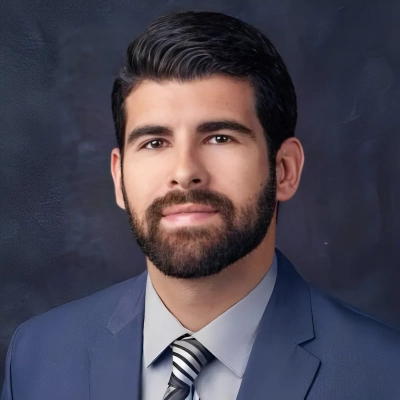
Website Analytics Launch Profitable New Service
Several years ago, we developed a prominent client website that appeared fantastic — but prior to the end of the month — showed analytics that revealed visitors had begun to bounce off before completing a desired action. This felt like failure, since we felt that we had nailed the design but missed the intent. Rather than hide from the data, we began validating why this may be — the users felt visual overload and lacked clear next steps.
That “failure” pushed us to completely re-think how we continue to design: now we build with conversion in mind, testing and valid data from day one. The failure inspired a new service, and it’s become one of our most profitable services since.
The most important takeaway? Failures may reveal where you have relied on assumptions instead of feedback. When you view failures as informative instead of unfortunate, new paths open that you did not know existed.

Leadership Burnout Transforms Management Philosophy
When I was at the beginning of my career as a manager, I really wanted to handle everything myself. I thought that great leaders help their teams avoid all the problems (even though those problems are essentially their job) and protect them from handling too much stuff.
Of course, this approach eventually backfired. I was almost burned out, decisions were taking a really long time, and people seemed disengaged. I felt like a failure. However, this experience forced me to change how I see myself as a leader and how I imagine a great leader.
I took some steps to change it: I started sharing decisions openly, made communication much more transparent and invited the team to help solve problems instead of trying to protect them from problems.
I understood that this kind of transparency and delegation didn’t make me a worse leader; maybe it made me a better one. It was a really important lesson for me to understand that great companies and great company cultures are not built because of control, they’re built because of trust.

Wrong Client Search Clarifies Business Focus
We once took on a CFO search that we honestly shouldn’t have. It wasn’t our lane — we specialize in supply chain and operations — but we thought we could stretch and make it work. We didn’t. We missed the mark, wasted time, and had to face some uncomfortable conversations with the client.
Looking back, that “failure” ended up being one of the best lessons we’ve learned. It taught us to be radically transparent about what we do and what we don’t. Now, if a role isn’t in our wheelhouse, we say that upfront. It might seem like turning business away, but it actually built more trust. Clients appreciate knowing we’re not just trying to make a sale — we’re trying to get it right.
That clarity changed everything. It helped us focus on the kind of searches we’re great at, deliver better results, and strengthen relationships along the way. Sometimes saying “no” early opens the door for the right “yes” later.

Repeated Job Losses Spark Entrepreneurial Journey
I was fired or laid off four times in the first five years of my career after college, including being fired from my very first job. I had moved across the country three times chasing success — to Connecticut, Seattle, and Denver — and after 5 years had nothing to show for it. I had an empty bank account, multiple failed relationships, and a broken resume with four different companies in just five years.
The last time I was laid off at 27-years-old, it was from a startup that I had poured my heart and soul into. Fortunately, that experience taught me marketing, branding, product development, and go-to-market strategy. Three weeks after that layoff, I decided to stop putting my fate into the hands of others, and I started my first business — one year later, I won first place at Denver Startup Week. Now eight years later, I’ve never worked another day for any company other than my own.
Sometimes, getting fired or laid off is exactly the catalyst you need to change your life!

Setbacks Deliver Lessons Not Failures
One of the most important lessons in my journey as a founder and CEO is that business rarely delivers “failures.” It delivers learnings. I grew up competitive through sport, which helped me push for high standards. The real growth came when I understood that every setback is feedback. Take the lesson, make the adjustment, try again.
Across my career, projects and campaigns have not always landed as planned. In those moments, the discipline is to pivot, adapt, and iterate. Quitting is easy. Progress comes from refining the approach and moving forward with clarity.
A story that stays with me involves a particularly demanding client whose expectations we could never quite meet. Despite strong work, they remained unsatisfied, my team felt invisible, and burnout loomed. We chose to let the client go and protect the team. A few months later, another company in the same sector called after seeing the campaigns we had delivered. They hired us for a similar project and became a long-term partner.
That experience reinforced three truths. First, excellence creates its own visibility. Second, fit matters. The right clients energize your team and the wrong ones drain it. Third, there are no failures, only learnings. My team showed me that they will always give their best, and my job is to apply the lesson, back their effort, and focus our energy where it creates the most value.
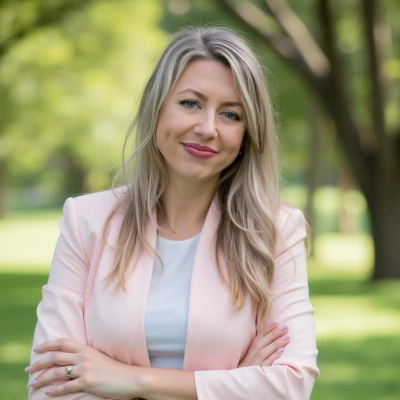
Flexibility Trumps Perfect Opportunity in Real Estate
In our experience at Mack Industrial, one situation that stands out involved a deal that initially fell through on a prime industrial site we had been pursuing in South Florida. We had spent months in due diligence, engineering review, and preliminary planning, only to hit an unexpected zoning roadblock that the municipality wasn’t willing to work around. At the time, it felt like a significant setback. The site was well-positioned, and we had lined up early tenant interest.
But walking away from that deal forced us to revisit other opportunities we had previously put on hold. Within a few weeks, we re-engaged on a nearby property that was slightly less prominent but had far fewer permitting hurdles. That second site ultimately turned into one of our most successful developments, with faster approvals, lower carrying costs, and strong long-term tenants. What initially felt like a failure ended up giving us the space to make a more brilliant, more profitable move.
The insight we gained was that flexibility and timing are often more valuable than locking into one “perfect” opportunity. In industrial real estate, delays can quickly become expensive, but so can a stubborn commitment to the wrong path. Since then, we’ve built more optionality into our pipeline and learned to treat every roadblock as a potential redirect toward something better suited to our model.

Failed Campaign Drives Customer Insight Revolution
We implemented what we assumed to be a groundbreaking paid campaign. As it turned out, this assumption was wrong, even within the organization. Weak engagement and high cost-per-lead figures only intensified the failure.
This failing exercise, however, was helpful because it minimized our guessing and dramatically increased listening. This came in the form of increasingly sophisticated customer behavior and engagement analytics. Where was the drop-off? What headlines were scanned? What images were bypassed? What insights were ignored?
This dramatically shifted our approach to our marketing messaging. Instead of leading with “platform efficiency,” we pivoted vastly to “real-world convenience.” In the following quarter, we accounted for more than a 40% increase in unpaid engagement, with no increase in advertising budget.
The marketing peg that denoted failure remained, but it was now the failure of the first campaign that shifted the focus toward more innovative, insight-driven marketing.

Market Shift Signals Business Transformation
About two years ago, we were working almost exclusively with large Indian enterprises. Big names, big budgets, but also slow approvals, unclear strategies, and payment cycles that dragged on forever. It wasn’t just frustrating. It was affecting our cash flow, our team morale, and even our reputation.
That struggle forced us to look elsewhere. We started exploring the US and European markets, and honestly, it opened doors we didn’t even know existed. The clients moved faster, the processes were cleaner, and the partnerships felt more balanced.
The real lesson? Sometimes a failure isn’t just a setback. It’s a signal. We learned to be more selective about who we work with and at what stage. Bigger clients aren’t always better clients, especially if their internal chaos becomes your problem.

Tech Conflict Creates Unexpected Media Advantage
There was once a case where Microsoft rejected emails from our domain tutanota.com. These emails didn’t even end up in the recipients’ spam folders, which was very strange, as we make sure to have a high sender score. At first, this was very frustrating because it had a direct impact on our users and we were unable to resolve the issue with Microsoft’s technical support. However, the issue quickly attracted a lot of attention in the press because journalists also use our service and their emails were no longer being delivered to Outlook users. This resulted in lively media coverage along the lines of “Tuta Mail is being bullied by Microsoft” — David versus Goliath, so to speak. This media coverage unexpectedly turned the problem into an opportunity, raising awareness of our mission and intensifying the discussion about user rights and fair access in the digital world, which can be restricted by big tech gatekeepers.
The situation also gave us direct access to a senior German manager at Microsoft, who was able to intervene and resolve the issue immediately. This experience shows that even apparent failures can open up opportunities for smaller companies like ours to change the internet for the better. In addition, the media coverage strengthened our image as a champion of privacy and a fighter for user rights.
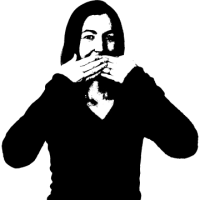
Product Failure Uncovers Valuable Niche Market
One situation that comes to mind was our product expansion in the early stages. We entered a new market with confidence, but the demand did not meet our expectations. Some people might have given up, but we decided to analyze data to understand customer behavior. This decision opened us up to a new niche segment. We then redirected our efforts toward that audience and launched a streamlined version of the product that became one of our most consistent performers.
The important lesson from this is that failure can be an effective research tool. It forced us to listen more closely to users and challenge our assumptions. We have learned to treat every underperforming initiative as feedback because it just could be what points to an opportunity.

Related Articles

Source: Failures That Led to Success: Unexpected Opportunities in Business
